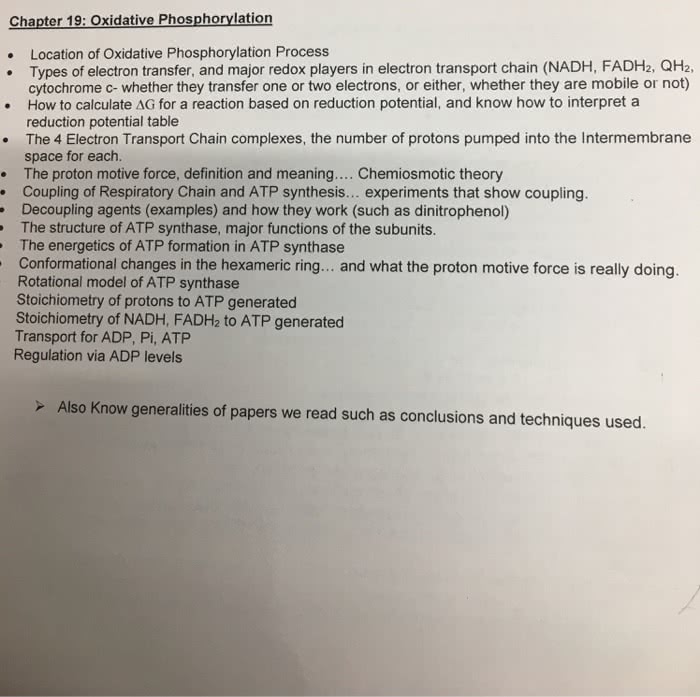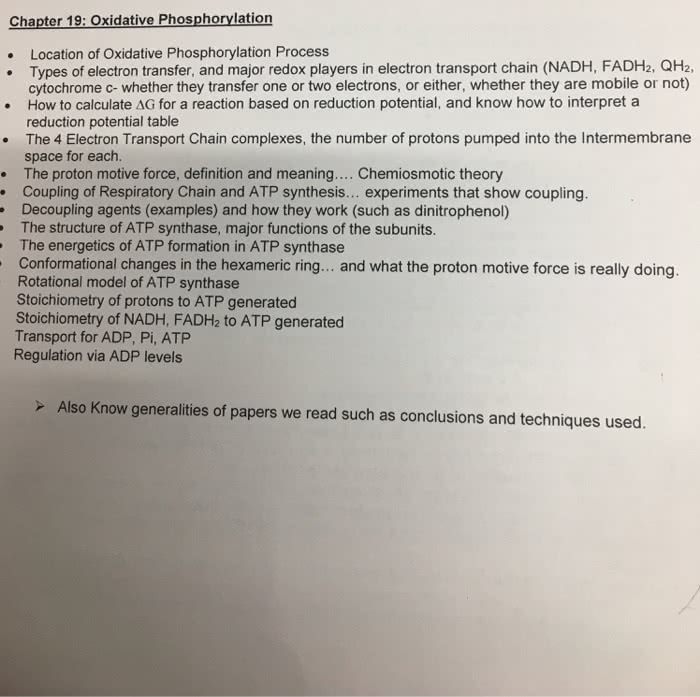Chemistry 2223B Lecture Notes - Cytosol, Succinate Dehydrogenase, Succinic Acid
Document Summary
Overview of electron transport: electron carriers (nadh, fadh2) from citric acid cycle give up 2 electrons each to the. Etc which ultimately goes to oxygen to make water: move protons from the matrix to the intermembrane space, which creates a concentration gradient form of potential energy. In approximate order of increasing affinity for electrons: flavins, iron-sulfur centres, ubiquinone, cytochromes, copper centres, flavins. Isoalloxazine (flavin) ring can accept two electrons (along with two protons: flavin ring group that will accept 2 electrons and 2 protons and protons go on the nitrogens. Iron atom accepts electron: heme does not tend to be floating around, tends to be bound to a protein, should be able to recognize fadh2 and the heme. Complex ii: succinate dehydrogenase: accepts two electrons from succinate and transfers them to fadh to make fadh2, electrons go from fadh2 to iron-sulfur centres, then to coenzyme q, pumps no protons across membrane.



